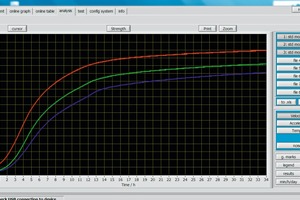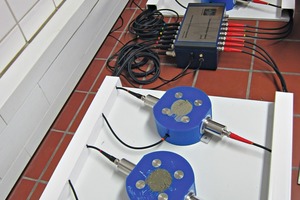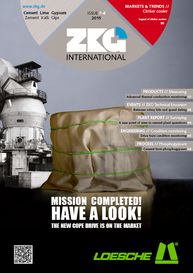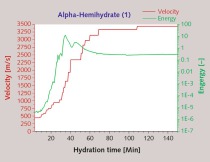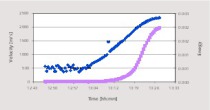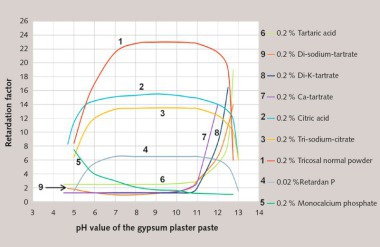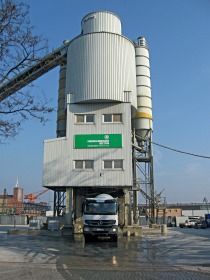Ultrasonic measurement system revolutionizes cement and gypsum R & D
Currently, international standards (ASTM C191 – 13 //www.astm.org/Standards/C191.htm" target="_blank" >www.astm.org/Standards/C191.htm:http://www.astm.org/Standards/C191.htm or DIN EN 196-3) for the hardening measurement of cement, mortar or plaster are still based on the Vicat needle test invented by Louis Vicat (1786-1861) more than 150 years ago. A typical disadvantage of this fairly outdated, but globally standardized test method is the low repeat accuracy. Ultratest from Achim near Bremen, Germany has developed a new ultrasonic measuring system which is based on measuring the propagation speed of sound waves in the hardened cement or plaster. The software is based on the international standard software Labview (National Instruments) and can be used in several languages.
Compared to the Vicat needle test, ultrasonic sound wave velocity measurement is a well-engineered contemporary test method offering a variety of advantages that result in a substantial reduction of development time and costs. The 8-channel ultrasonic measurement system IP-8 allows:
Setting development from blending to 28-days strength in one measuring procedure
Immediately visible results
Extremely high repeat accuracy
Automatic data logging
Moreover, IP-8 enables an early stage recognition of deviations by comparing current values with stored reference runs of the curve. The user can easily define admissible deviations from reference curves by creating failure envelopes. National Instrument’s international standard software Labview ensures intuitive handling and operation of the ultrasonic measurement system IP-8.
Figure 1 displays three setting curves of standard mortar. 50 % H2O is the standard mixing ratio. From the screen, it is easily visible that 40 % H2O result in a better consistency, but is difficult to handle. 60 % H2O lead to a significantly lower final strength of the mortar. In order to understand critical situations, the user can easily add further curves, e.g. derived signal curves or the temperature of the material under test. Figure 2 shows an IP-8 system with 6 (of 8 possible) channels connected.
UltraTest’s ultrasonic measurement system IP-8 has recently been selected by a major European cement manufacturer to be installed at every plant throughout Europe.
//www.ultratest.de" target="_blank" >www.ultratest.de:www.ultratest.de

